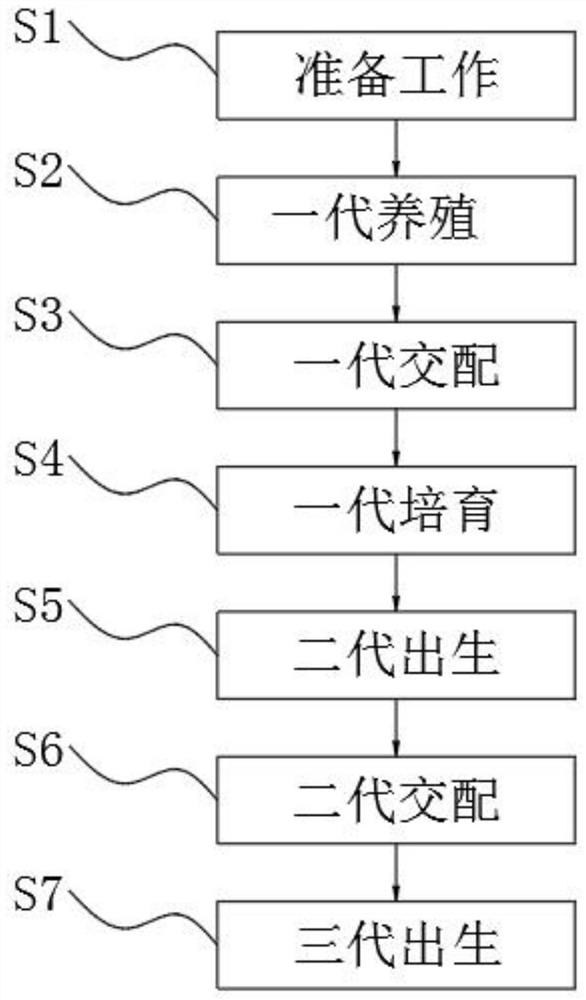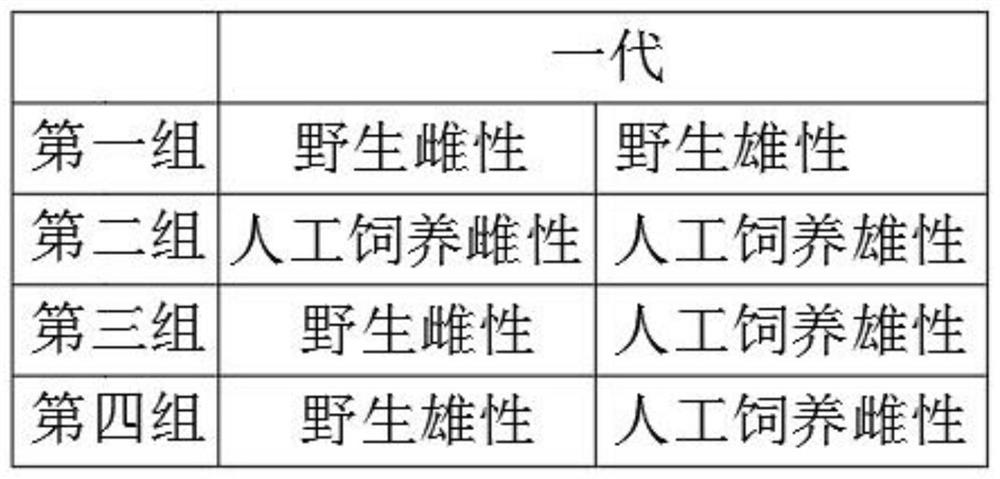A method for studying genetic homozygosity based on sd rats
A technology of homozygosity and rats, applied in the field of SD rat genetics, can solve the problems of not being able to study the homozygosity of SD rats well, and the research results are not intuitive and accurate enough, so as to achieve a thorough understanding and increase the effect of accuracy
- Summary
- Abstract
- Description
- Claims
- Application Information
AI Technical Summary
Problems solved by technology
Method used
Image
Examples
Embodiment 1
[0029] A method for studying genetic homozygosity based on SD rats, comprising the following steps:
[0030] S1. Preparation: Prepare 8 SD rats with healthy limbs, healthy body, 320 g body weight and the same coat color. The SD rats are all 60 days old, with half of the female SD rats and half of the male SD rats, and Half of the 8 SD rats were wild SD rats, and the other half were artificially raised SD rats, and then the 8 SD rats were divided into four groups, the two groups were artificially raised SD rats and wild SD rats, The four groups of SD rats were wild female SD rats and wild male SD rats, artificially raised female SD rats and artificially raised male SD rats, wild female SD rats and artificially raised male SD rats, and wild male SD rats. Rats and artificially raised female SD rats;
[0031] S2, first-generation breeding: place the four groups of SD rats in step S1 in four breeding pens respectively, feed the SD rats in the artificial feeding group every day and...
Embodiment 2
[0045] A method for studying genetic homozygosity based on SD rats, comprising the following steps:
[0046] S1. Preparation: Prepare 8 SD rats with healthy limbs, healthy body, 350 g body weight and the same coat color. The SD rats are all 70 days old, and half of them are female SD rats and half of male SD rats. Half of the 8 SD rats were wild SD rats, and the other half were artificially raised SD rats, and then the 8 SD rats were divided into four groups, the two groups were artificially raised SD rats and wild SD rats, The four groups of SD rats were wild female SD rats and wild male SD rats, artificially raised female SD rats and artificially raised male SD rats, wild female SD rats and artificially raised male SD rats, and wild male SD rats. Rats and artificially raised female SD rats;
[0047] S2, first-generation breeding: place the four groups of SD rats in step S1 in four breeding pens respectively, feed the SD rats in the artificial feeding group every day and art...
Embodiment 3
[0061] A method for studying genetic homozygosity based on SD rats, comprising the following steps:
[0062] S1. Preparation: prepare 8 SD rats with healthy limbs, healthy body, 330 g body weight, and the same coat color. The SD rats are all 65 days old, with half of the female SD rats and half of the male SD rats, and Half of the 8 SD rats were wild SD rats, and the other half were artificially raised SD rats, and then the 8 SD rats were divided into four groups, the two groups were artificially raised SD rats and wild SD rats, The four groups of SD rats were wild female SD rats and wild male SD rats, artificially raised female SD rats and artificially raised male SD rats, wild female SD rats and artificially raised male SD rats, and wild male SD rats. Rats and artificially raised female SD rats;
[0063] S2, first-generation breeding: place the four groups of SD rats in step S1 in four breeding pens respectively, feed the SD rats in the artificial feeding group every day an...
PUM
 Login to View More
Login to View More Abstract
Description
Claims
Application Information
 Login to View More
Login to View More - R&D
- Intellectual Property
- Life Sciences
- Materials
- Tech Scout
- Unparalleled Data Quality
- Higher Quality Content
- 60% Fewer Hallucinations
Browse by: Latest US Patents, China's latest patents, Technical Efficacy Thesaurus, Application Domain, Technology Topic, Popular Technical Reports.
© 2025 PatSnap. All rights reserved.Legal|Privacy policy|Modern Slavery Act Transparency Statement|Sitemap|About US| Contact US: help@patsnap.com


